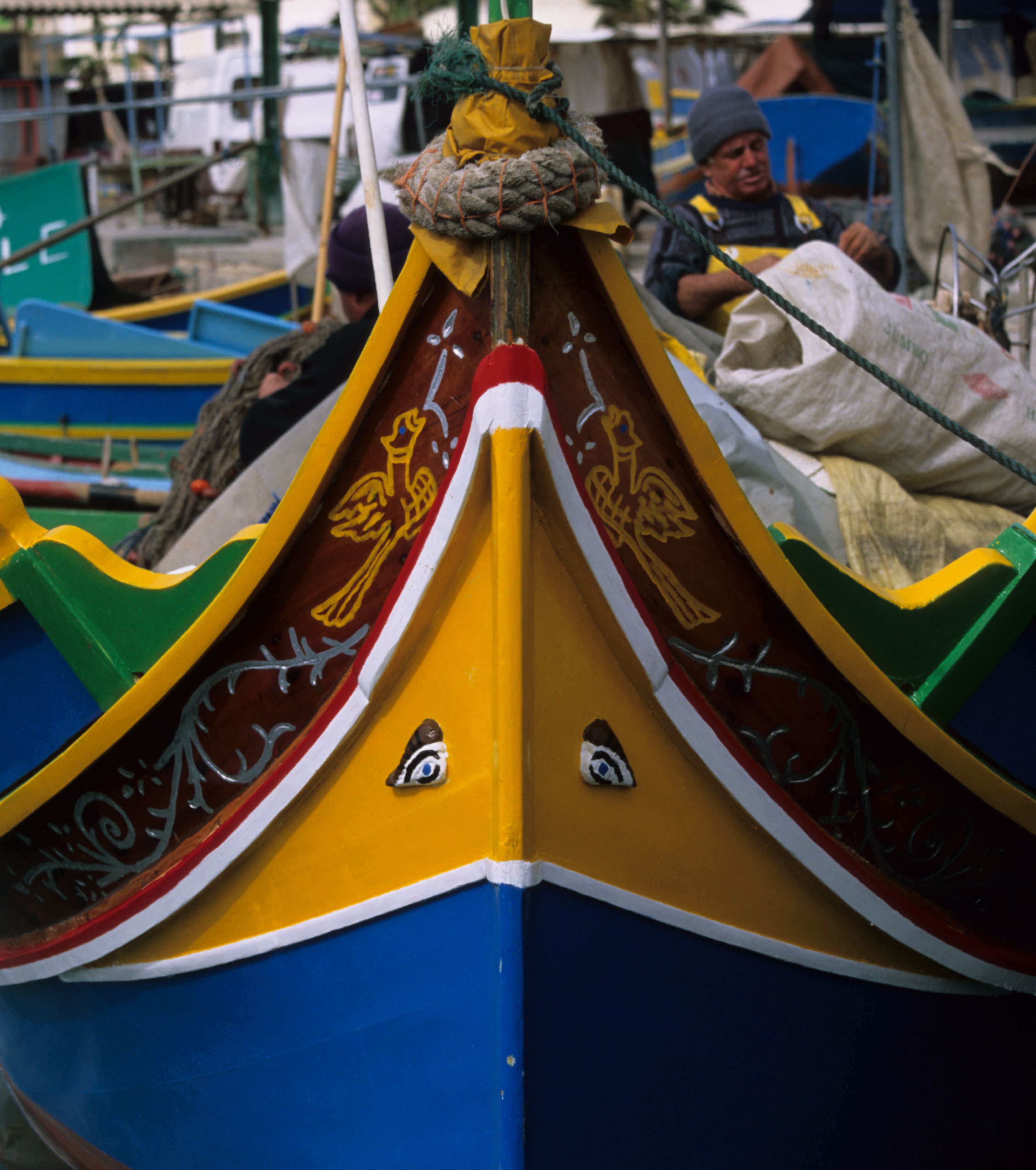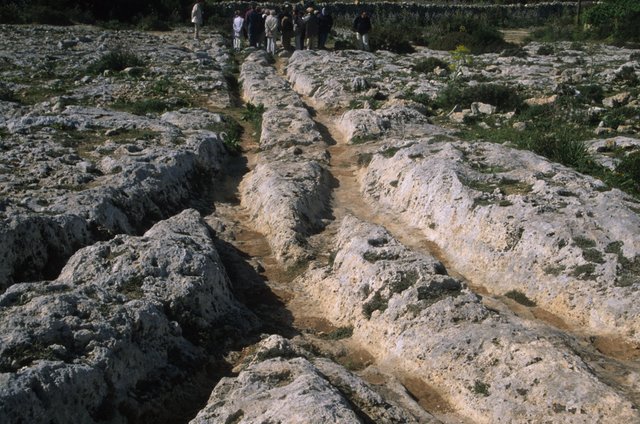Hello fellow Steemians:
The Republic of Malta consists of two main islands, Malta and Gozo, with a third, much smaller island called Comino lying between the two larger islands. This small nation of 122 square miles stands at the centre of the Mediterranean Sea roughly halfway between the Italian mainland and North Africa. Malta is well known for the colourful fishing boats in its harbours.

However, the most mysterious feature of Malta is not that well known.
At different sites over the two main islands and in the surrounding waters are found some man-made features which have been given the name ‘cart ruts’, largely because the first visitors to discover them believed they had been worn by a cart. Their most famous site is at Clapham Junction, named after Britain’s busiest railway intersection, an area in the southwestern part of Malta, where the wind sweeps in from the sea and the air smells particularly salty. This area, about a hectare in size, is similar in appearance to a limestone pavement and is scored by parallel channels up to 20 inches deep and 8 inches wide, with another 8 inches separating the two channels. These ruts run mostly in straight lines in no particular direction, though there are places where one set of ruts branches off from another, like a set of railway points. There are many ideas about what created these ruts. One theory is that a contraption, similar to the travois of the North American Indians, wore them away, though this is difficult to reconcile with the shape of the ruts, which to the hand feel smooth and rounded at their base, more consistent with wheels wearing away the rock. If travois were used, what heavy weight was transported on a regular enough basis, along the same path, to wear away the ruts so deeply and why was it being moved by the people of the time?

Large stones, salt and topsoil have all been postulated as the cargo. The stones might have been the ones used to build the megalithic temples found over the islands and therefore would have had the weight necessary to scrape such channels in the rock, though it is difficult to imagine stones weighing 50 tons being transported on a frame. Salt wouldn’t have been needed in such quantities to warrant it being transported in the amounts required to create the ruts. Topsoil is a distinct possibility as the ruts do conform to the patterns of the island’s oldest settlements. This would mean the topsoil was transported from the coast, which seems unlikely due to the exposed nature of the clifftops and the friable nature of the rock, which wouldn’t support good quality topsoil. However, the coastline may have changed since the ruts were created, the land having fallen away dramatically due to seismic activity. This idea is supported by the fact that in other parts of the country, some ruts disappear into the sea on one side of a bay and reappear on the other side. Those under the sea tend to be deeper than the ones on the land, they go on for longer in a straight line and stand proud of the seabed in places.
Hi! I am a robot. I just upvoted you! I found similar content that readers might be interested in:
http://intheknowtraveler.com/malta-the-cart-ruts-mystery/
Downvoting a post can decrease pending rewards and make it less visible. Common reasons:
Submit
Yes, that's possibly my piece too - I like the cart ruts and wonder what they show about the seismic activity in the area.
Downvoting a post can decrease pending rewards and make it less visible. Common reasons:
Submit